“Hitching a Ride to Tikal” by Alan Jackson (Belize)
Alan and Keith were Peace Corps Volunteers in Belize, Central America, from 1976 to 1978. Alan was stationed in Belize City where he was assigned to the Fisheries Unit Laboratory, and boarded with a young Belizean family. Keith was posted to the Mopan Mayan village of San Antonio in Toledo District and advised a beekeeper and honey cooperative. Keith lived in a thatch hut without electricity or running water.
•
Hitching a Ride to Tikal
By Alan Jackson
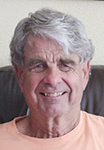
Alan Jackson
Both Keith and I had to work the annual Agricultural and Trade Show on Saturday and Sunday, April 22 and 23, 1978, in Belmopan, Belize. The Ag Show is like a small county fair with dozens of thatched booths displaying the various goods and products of government and private industry. The British military usually had some of their weapons on display, too. The two-day fair also included food stalls, horse racing, soccer, a rodeo and a small livestock barn.
Keith would be manning a booth promoting honey from the Southern Beekeepers Cooperative, and I would be working the Fisheries Unit display. We had already planned to take a few days off after the
Ag Show and go to the ancient Mayan site of Tikal just across the border in Guatemala. Neither Keith nor I had been to Tikal before, and this might be our last good opportunity to go before our Peace Corps tours of duty ended.
We left the Ag Show late Sunday afternoon and walked the quarter mile or so to the Western Highway. Each of us was carrying a small backpack and shoulder bag. We stood at the edge of the road and hoped to hitch a ride west to San Ignacio or beyond.
Within just a few minutes an old, weather-beaten minivan stopped for us. The driver and his four passengers were Americans and told us they were heading to their farm near Benque Viejo del Carmen. It was getting late in the day, and they said that we were welcome to spend the night with them. Elated at our good fortune, Keith and I hopped into the van without hesitation. The driver told us that he ran a Christian camp and would be pleased to talk to us about accepting Christ into our lives. Keith and I stalled and deflected, not wanting to offend our much-needed hosts for the night.
It was just after sunset when we reached the farm and rustic church camp, and Keith and I were showed to the bunkhouse that we would have to ourselves that night. We explained to our hosts that we were tired and dirty and simply wanted to go bathe in the Mopan River and then turn in for the night. They could talk to us about Jesus at breakfast.
Keith and I walked down to the river in the dark, undressed and bathed. While sitting on the bank and drying off for a few minutes, we decided that we could avoid our overzealous hosts in the morning by sneaking away before sunrise. Satisfied with our plan, we dressed, walked into town and found a small restaurant where we lingered over our plates of tamales, killing as much time as we could. We finally returned to the church camp and went to sleep.
The next morning at daybreak, we packed our bags and quietly slipped out of the bunkhouse and walked into town for breakfast. After breakfast, we walked the mile and a half to the Belize-Guatemala border. We crossed the border and walked across the bridge over the Mopan River.
We learned that the bus to the Tikal cutoff was not scheduled to depart until 1:30 that afternoon, so we found a shady place under some oak trees down by the river and passed the time by reading and napping. It was a little unsettling to see Guatemalan soldiers armed with M1 carbines watching over the area. In Belize there was no military presence on the streets, but here in Melchor soldiers seemed to greatly outnumber the police.
At about 1:00 we walked over to the small plaza to catch the bus that would take us the 40 miles to El Cruce, the cutoff for the road to Tikal.
Eventually the bus showed up,
The driver sat behind the steering wheel, belched quite audibly and started the engine with an almost deafening roar. Dark smoke billowed out from under the bus. The engine backfired loudly a few times and then settled to an idle. We boarded, told the driver that we were going to Tikal, and took our seats near the back of the bus where we could watch the people seated in front of us. We were the only gringos on the bus. The bus pulled out of the plaza, backfired a couple more times and made two or three stops to pick up more passengers before leaving the city.
The road was paved but badly potholed. The driver stopped the bus every five miles or so to drop off or pick up passengers. This, obviously, was not the autobús directo. It was late afternoon by the time we reached El Cruce and exited the bus. On our way out the door the driver explained that the next bus to Tikal would not come until the next morning.
El Cruce was not a town or community; it was literally el cruce – just a crossroads, but we heard that there was a place to spend the night not far from El Cruce. It was called El Gringo Perdido and was on the shore of Lake Petén Itzá about three miles from El Cruce. It took us a little more than an hour to walk to El Gringo Perdido.
What we found was a new, upscale campground with a restaurant. The proprietor, a young American, met us and said that we could spend the night under a palapa (thatch shade structure) out on a deck built over the lake and use the bathroom behind the restaurant. That sounded perfect to us. He then took us on a short tour of his facility and told us a little about himself.
His name was David Kuhn, and he was from Florida. In 1974 after several visits to Guatemala, he decided to move there and build a small cabin on the lake. Local people called him Don David, el gringo perdido – the lost gringo. David liked the lake, jungle, animals and friendly people, and he soon decided that this was the place to build bungalows and a camping area for tourists. On Dec 29, 1975, he opened El Gringo Perdido, the first jungle accommodations on Lake Petén Itzá. He explained how he was hoping to attract backpackers and budget travelers looking for an eco-friendly yet clean and comfortable place to stay. He showed us his “zoo” of several caged indigenous animals including a margay. Keith and I both thought that keeping wild animals in cages was not exactly “eco-friendly.”
We set up our two hammocks under the palapa, watched the sunset and then walked over to the semi-open-air, thatched restaurant. We hadn’t eaten since breakfast, and we devoured our meal of thickened turkey soup and corn tortillas. We topped it off with a couple of Gallo beers. David came by our table to see how we were doing. He told us that the bus to Tikal would be at El Remate at 8:00 in the morning and that he would drop us off at the bus stop.
After dinner we retired to our palapa. We were soon treated to a spectacular display of lightning out over the lake. Bolt after bolt of lightning lit up the night sky for almost an hour. It was the perfect way to end a long but perfect day.
We woke up the next morning well rested and eager to continue our trip. So far, we had only traveled about 75 miles in 36 hours. We needed to pick up the pace. We had breakfast at the restaurant, settled our bill and found David. He told us to meet him at his pickup truck in ten minutes and he would run us out to the bus stop at El Remate. Ten minutes turned into 30 minutes, and we became concerned about missing our bus. We could have walked to El Remate in 30 minutes. Finally, David came dashing out of his office and told us to jump in the truck, and off we raced down the dirt road. We reached the bus stop just as the bus to Tikal pulled in.
We boarded the bus and took our seats, again near the back. After about 30 minutes we came to a slight rise in the road and the bus’s tires lost traction in the mud. The driver ordered everyone out of the bus. We could see that we were only a few feet away from the top of the rise. Instinctively, without being asked, the male passengers gathered behind the bus and were ready to push. The driver put the bus in gear and slowly spun the rear wheels while we pushed. The bus gradually made it out of the mud and to the crest of the hill. We all got back in the bus and continued our way down the dirt road to Tikal.
After just another mile or two, we came to a small snack shop and bar. The driver pulled the bus to the side of the road and announced, Quince minutos — fifteen minutes. Keith and I wandered into the wooden and concrete establishment and looked around. The bus driver headed straight to the bar that was off to one side of the room. He sat on one of the four barstools and said something to the bartender. The bartender reached behind him and took a small glass flask from the shelf and handed it to the bus driver. The bottle had a picture of an indigenous woman on it. I was close enough that I could read the label on the bottle: “Quetzalteca Aguardiente 36° Alc./vol. 250 ml.” – 72-proof cane alcohol. The bus driver took a long swig and then slipped the half-emptied flask into his back pocket. He got up off the barstool and shouted, Todos abordo. Vamos. (All aboard. Let’s go.)
We boarded the bus, returned to our same seats, and wondered what would happen next. The bus driver, presumably now somewhat sedated, started up the engine, shifted the bus into gear, popped an eight-track cartridge into the tape player and, to the sound of Linda Ronstadt singing “Blue Bayou,” we were off. The rest of the way to Tikal was without incident.
The cheapest accommodation at Tikal was a campground with rental hammocks and a communal toilet. Keith and I were both ready for something a little more exclusive than that. We found the Tikal Inn, which had an available thatched hut with two beds. That sounded fine. The toilet and shower were just a short distance away in an adjacent burned-out, roofless building that had, until recently, been the Inn.
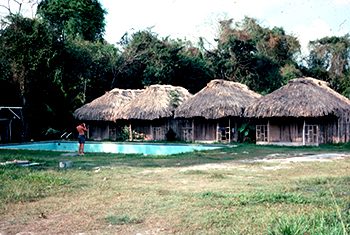
The Tikal Inn huts
The remains of the Tikal Inn suggested that it had once been a well-appointed hotel. The main building was set about 100 yards north of an airstrip. Behind it were four thatched huts lined up on one side of a large rectangular swimming pool. The pool was empty except for a few inches of rainwater, some moss and other debris. The pool obviously had not been used for quite some time. The other three huts were not occupied. In fact, we never saw any other guests at the Tikal Inn.
Exhausted from the day’s travel, we did not venture into the grounds of the ruins that afternoon. Instead, we showered and napped for an hour or so. Just before sundown we headed out to look for a place to eat. We walked along the edge of the partially paved airstrip, turned left onto the main road and found a cluster of small kitchens – comedores – serving basic meals.
We entered one and asked, “Hay comida? (Are you serving meals?)” A Mayan woman answered, “Si, hay. Siéntate en la mesa.(Yes, we are. Sit at a table.)”
We sat at a wooden table covered with a thin plastic tablecloth. There were only three tables in the small, screened-in dining room. The kitchen occupied one corner of the room. Apparently, there was no menu, just “comida” – dinner. The meal of fried chicken, French fries and corn tortillas was filling if not delicious. Our bellies full, we walked back to our hut and went to sleep.
The next morning, at the sound of roosters crowing, we rose from bed, walked over to the burned-out shell of a hotel and washed up. We then walked along the airstrip to the cluster of comedores, entered the same one from the previous evening, sat down and ordered breakfast. Again, there was no menu, just desayuno – breakfast. We felt encouraged by the sight of a woman patting corn masa by hand into thin cakes and then placing each onto the coral (flat iron surface for cooking tortillas). Fresh, handmade tortillas!
We were served a fried egg, refried black beans and a stack of hot, corn tortillas. We asked for juice and were told that the only juice was orange juice, and it was freshly squeezed just minutes ago. That would do nicely. The coffee was instant Nescafe, but we were more than satisfied with our breakfast.
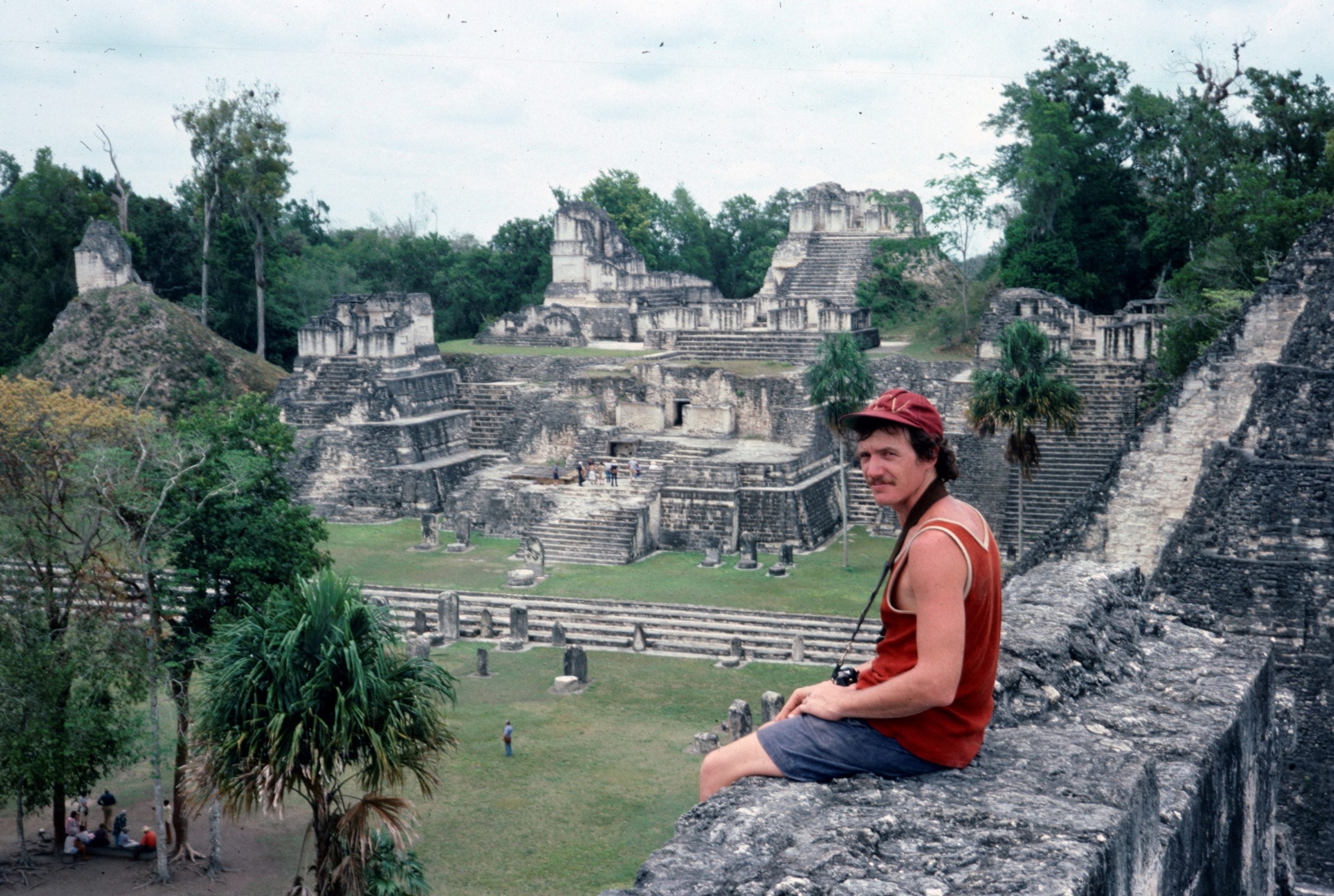
Keith sitting atop the North Acropolis
We spent the rest of the morning exploring the grounds of Tikal. We encountered groups of coati and a couple of flocks of wild turkeys. Trails led through the dense jungle to clearings containing the various limestone ruins. We climbed to the tops of all the major temples. From the top of the 212-foot-tall Temple IV, we could see three other temples poking out from the jungle below.
We took a break from scrambling up and over various ruins and found a somewhat shaded place at the top of the Central Acropolis. While sitting there, we became aware of an increasingly foul odor. Then we heard rustling in the trees above us. Looking up we saw a troop of about 10 black howler monkeys. They were moving slowly but deliberately from tree to tree. One of them had a baby clinging to her abdomen. As they moved farther away, the odor dissipated.
 After a couple of hours more, we were ready to return to our hut. In front of the Tikal Inn was an old twin propeller Aviateca airliner. It had the name “Itza” painted on the side of the fuselage just behind the nose. Keith, who knew more about aircraft than I, recognized the plane as a 1950s vintage 44-passenger Convair CV-340. Beside it was a Guatemala Air Force DC-3. We both wondered how the planes were able to safely land on such a poorly surfaced runway.
After a couple of hours more, we were ready to return to our hut. In front of the Tikal Inn was an old twin propeller Aviateca airliner. It had the name “Itza” painted on the side of the fuselage just behind the nose. Keith, who knew more about aircraft than I, recognized the plane as a 1950s vintage 44-passenger Convair CV-340. Beside it was a Guatemala Air Force DC-3. We both wondered how the planes were able to safely land on such a poorly surfaced runway.
It rained on our second full day at Tikal, but that did not stop us from further exploring the grounds. In fact, it felt good to be cooled by the rain. Also, we had the entire park to ourselves. We did not see anyone else out amongst the ruins. It just felt good to race from site to site, in the rain, in the jungle, all by ourselves. It was so different from being in Belize City. There was no traffic, no street hawkers, no putrid canals. It was exhilarating. We ended the day just like we ended the day before, sitting down at our favorite comedor to a simple meal and an ice-cold bottle of Gallo beer.
After three nights and two full days of exploring Tikal, it was time to pack up and head back to Belize. We took the morning bus out of Tikal and easily made the connection to Melchor. After crossing the border, we caught the next bus headed to Belize City. We could not believe our luck as we made every connection, and each bus was running on time. We would be in Belize City in time to attend the reception that the Peace Corps Director was giving for the newly sworn in Volunteers. Because I had helped with the training for this new class of Volunteers, and because the class included two Volunteers who would be assigned to the Fisheries Unit, I wanted to be at the reception to support them.
The bus pulled into Belize City and stopped at the Pound Yard Bridge which was the end of the line. It was just a quarter mile walk from there to home. A quick shower, a change of clothes and we were ready for the reception.
What a memorable time the last few days were!
•
Following his Peace Corps service in Belize, Alan spent 40 years working for NOAA (National Oceanic and Atmospheric Administration) Fisheries. He is now retired.
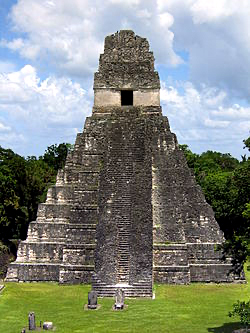
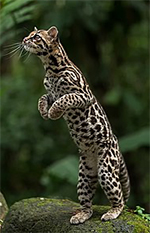
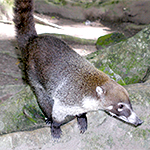
Thank You Alan Jackson for recalling your classic Peace Corps Volunteer journey traveling through the Mayan section of the New World: “Hitching a Ride to Tikal.” Tikal was capital of the Mayan world between 400 AD to 1000 AD when the Mayan world suddenly came crashing down.
As one who has visited the magnificent Incan cities of Cuzco and Machu Picchu, I can attest to the extraordinary beauty and craftsmanship of the City of Tikal and its stellar limestone buildings; some of these pyramid-shaped buildings rise up just a few feet above the tree-line, giving one an unimpeded view across the top of the Guatemalan jungle.
Like most Western Hemisphere Volunteers it’s hard not to be intrigued by the New World’s indigenous people — and if you’re put off by the high demand to see Incan remains — try visiting Tikal and the neighboring Mayan cities of Chichen Itza and Palenque (State of Chiapas, Mexico).
While Alan and Keith made their sojourn to Tikal by bus and by luck, you can fly in as I did in 1969. After finishing a 6 week education program for farmers who wanted to learn how to can their products, I flew back to California via Tikal where the only other person there was the famous Peruvian explorer, Eugene Savoy, making a documentary for ABC TV about how Incan and Mayan cultures were in contact via reed boats (1970).
As Alan captured the raw beauty of Belize and Guatemalan environments and the people who fed them and guided them, he’s also introducing you to descendants of the Mayan Culture. If you want more of the Mayan culture, the Tikal plane from Guatemala City lands in Merida (Yucatan Peninsula), making Palenque and Chichen Itza easily accessible.
Tikal is mind blowing — over 300 buildings uncovered possibly housing 90,000 citizens. You couldn’t fit in anymore than a 1000 citizens at Machu Picchu. As Alan’s journey revealed, it is well worth visiting Tikal, either by land or by air. And don’t be surprised if it rains…
WM Evensen
PCV
Peru 1964-66